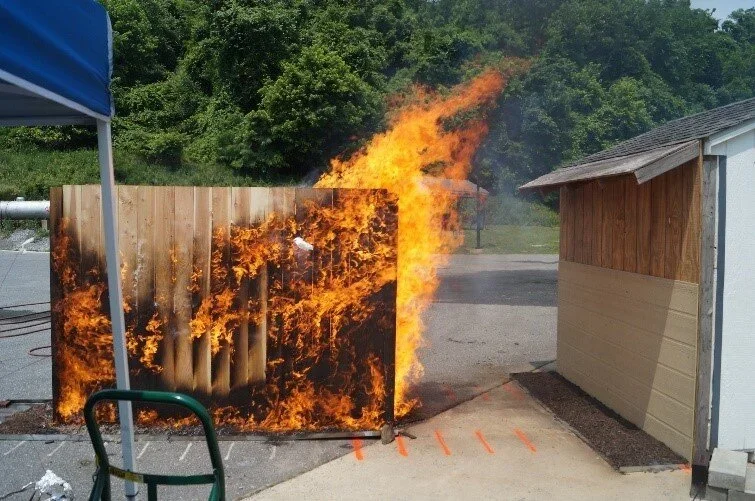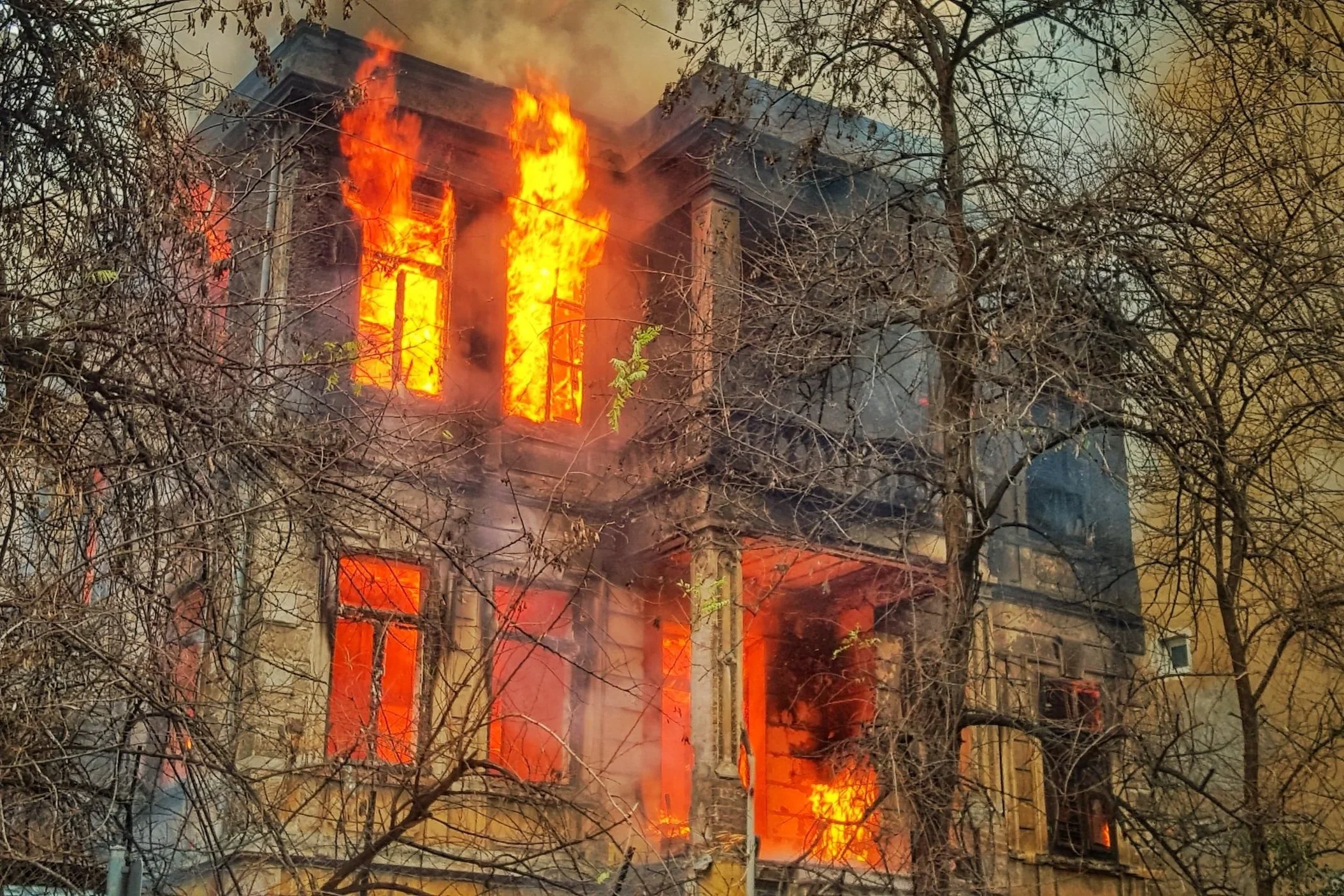there are Three Key Ways Wildfires Spread
Ember Storm
Embers are small pieces of burning material that can travel far ahead of the fire.
Embers start new fires when they land on roofs, in gutters, in vegetation around your home or enter vents and ignite a home from the inside out.
Radiant Heat
Radiant heat generated from burning fences, an adjacent structure on fire, or plants within 5’ feet of a home can ignite a house without flames ever making contact.
This is particularly challenging in densely populated areas with structures positioned within 30 feet of one another, where the heat from one burning home can ignite the next. For instance, in this video, we learn from Dr. Yana Valachovic about the challenges radiant heat poses to one of a structures vulnerabilities - windows.
Direct Flame
When flames touch a structure, combustible parts like wood siding, decks, or fences can catch fire. This usually happens if vegetation, mulch, or other burnable materials are within within 5 feet of a structure.
Wildfire Spread Resources
-
“It will happen here again: Reflecting on the LA fires and what it means for the BayArea fire prevention” on January 23, 2025, was hosted by The Bill Lane Center for the American West as part of the Wildland Fire Seminar series.
-
This study focuses on increasing preparedness for future incidents and the life safety aspects of the Camp Fire incident: notification, evacuation, traffic, temporary refuge areas, rescues, and fatalities. A total of 31 temporary refuge areas were implemented during the incident, involving more than 1200 civilians. Further, 198 specific evacuation assistance / rescue events were identified, involving at least 1000 civilians.
-
The lessons from the NIST Camp Fire case study prompt methodology and other considerations about WUI fire incidents that can be used by small and intermediate-sized WUI communities to help develop notification and evacuation plans.
-
The CWPP provides a roadmap to mitigate the risks posed by wildfires including goals for improving wildfire response, community preparedness, fuel management, infrastructure, ignition reduction, home hardening, and more. Input from the public and other stakeholders helps inform priorities.
-
Viewer Discretion Advised
This short animation explains what embers are and how they can travel long distances to continue and start new fires. You will get a sense for what it feels like to be caught in an ember attack and understand some of the reasons fire services recommend that you leave a wildfire risk area early, before a fire starts.
-
The science-based methodology in this report uses the knowledge collected from post-fire field observations spanning over a dozen years and tens of thousands of hours of field data integration and analysis, and utilizes the latest technical knowledge gained from laboratory and large-scale research in fire propagation and hazard mitigation in the WUI.
The study is the result of a sixteen-month collaborative effort between NIST, the California Department of Forestry and Fire Protection (CAL FIRE), and the Insurance Institute for Business and Home Safety (IBHS).
-
“New Timeline of Deadliest California Wildfire Could Guide Lifesaving Research and Action” on February 8, 2021, gives us insight into what lessons we can learn to prevent a disaster like the 2018 Butte County wildfire.


